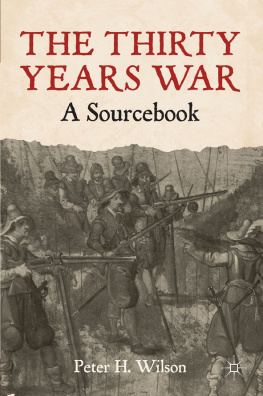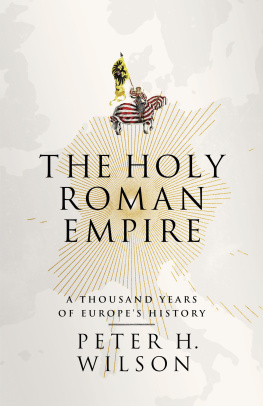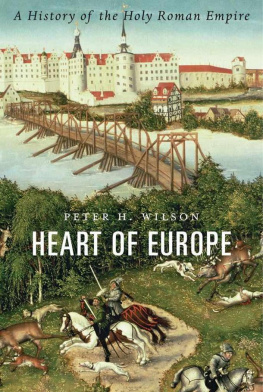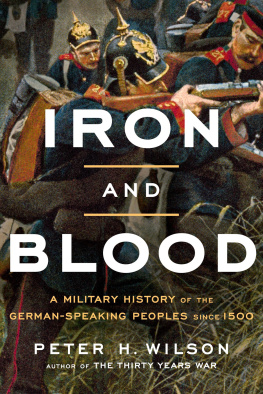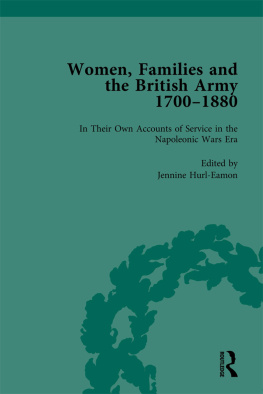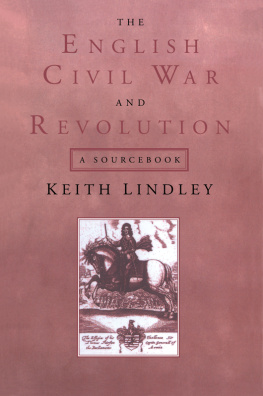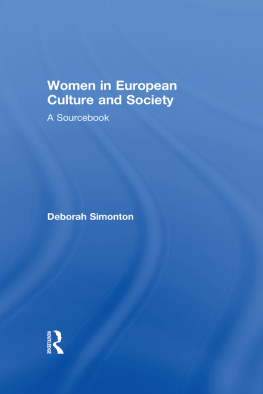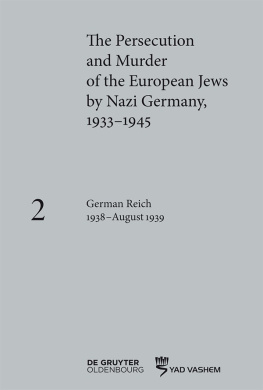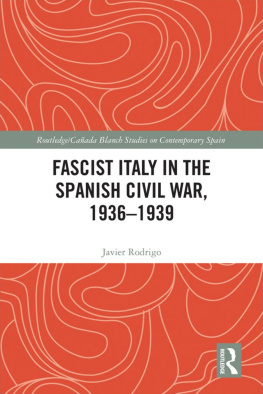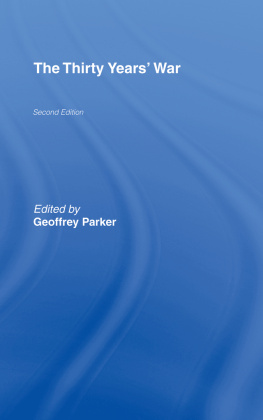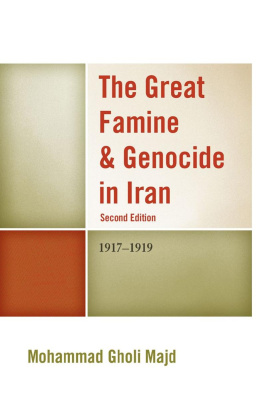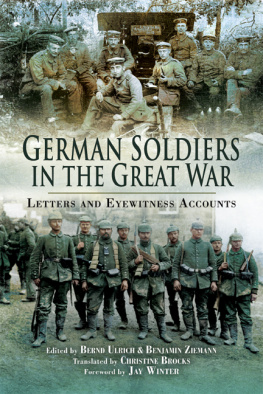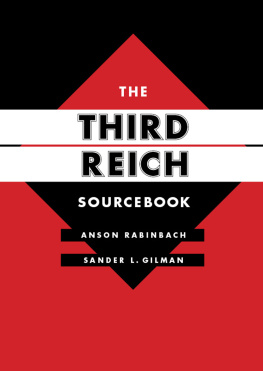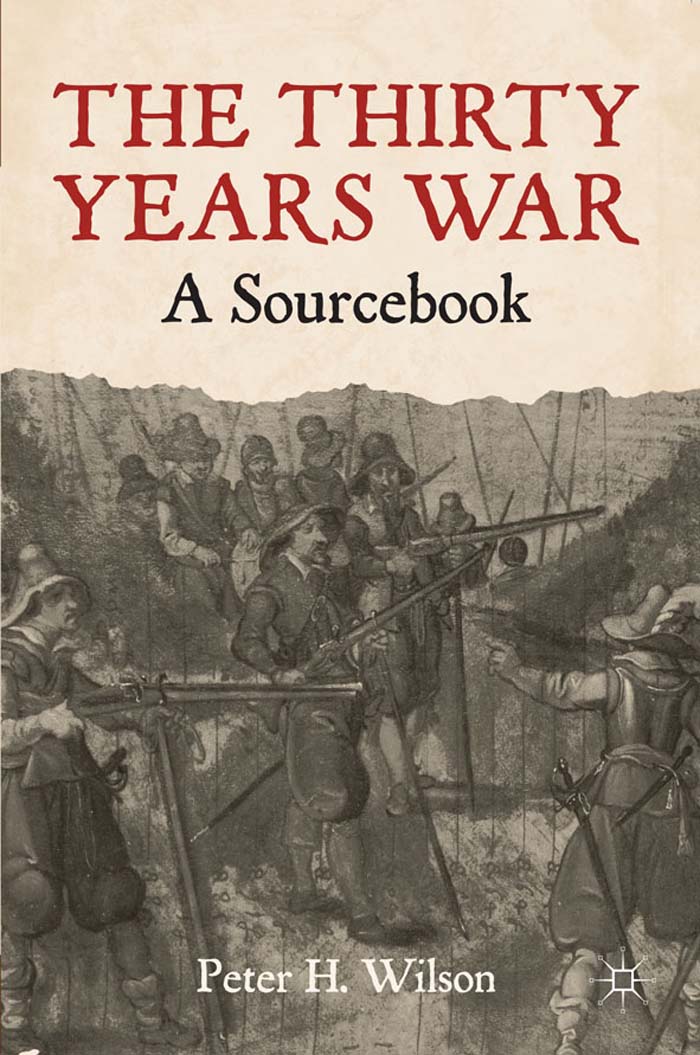
Wilson Prelims 16/9/10 8:50 am Page i
The Thirty Years War
Wilson Prelims 16/9/10 8:50 am Page ii
Also by Peter H. Wilson
WAR, STATE AND SOCIETY IN WRTEMBERG
THE HOLY ROMAN EMPIRE 14951806
FROM REICH TO REVOLUTION 15581806
EUROPES TRAGEDY: A HISTORY OF THE THIRTY YEARS WAR

Wilson Prelims 16/9/10 8:50 am Page iii
The Thirty Years War
A Sourcebook
PETER H. WILSON

Wilson Prelims 16/9/10 8:50 am Page iv
Introduction, selection, editorial matter and translation of documents
Peter H. Wilson 2010
All rights reserved. No reproduction, copy or transmission of this publication may be made without written permission.
No portion of this publication may be reproduced, copied or transmitted save with written permission or in accordance with the provisions of the Copyright, Designs and Patents Act 1988, or under the terms of any licence permitting limited copying issued by the Copyright Licensing Agency, Saffron House, 610 Kirby Street, London EC1N 8TS.
Any person who does any unauthorised act in relation to this publication may be liable to criminal prosecution and civil claims for damages.
The author has asserted his right to be identified as the author of this work in accordance with the Copyright, Designs and Patents Act 1988.
First published 2010 by
PALGRAVE MACMILLAN
Palgrave Macmillan in the UK is an imprint of Macmillan Publishers Limited, registered in England, company number 785998, of Houndmills, Basingstoke, Hampshire RG21 6XS.
Palgrave Macmillan in the US is a division of St Martins Press LLC, 175 Fifth Avenue, New York, NY 10010.
Palgrave Macmillan is the global academic imprint of the above companies and has companies and representatives throughout the world.
Palgrave and Macmillan are registered trademarks in the United States, the United Kingdom, Europe and other countries
ISBN 9780230242050 hardback
ISBN 9780230242067 paperback
This book is printed on paper suitable for recycling and made from fully managed and sustained forest sources. Logging, pulping and manufacturing processes are expected to conform to the environmental regulations of the country of origin.
A catalogue record for this book is available from the British Library.
A catalog record for this book is available from the Library of Congress.
Printed and bound in Great Britain by
CPI Antony Rowe, Chippenham and Eastbourne
Wilson Prelims 16/9/10 8:50 am Page v
For Jeremy Black
This page intentionally left blank
Wilson Prelims 16/9/10 8:50 am Page vii
Contents
List of Maps, Figures and Illustrations
xv
Chronology
xvii
Maps and Figures
xxvi
Acknowledgements
xxxi
Introduction
Political and religious tension in the Empire after 1555
The Religious Peace of Augsburg, 1555
The Declaratio Ferdinandea, 24 September 1555
The Donauwrth Incident, 1607
Confessional polarisation? Protestant Union and CatholicLeague
Confessional Parties
The Protestant Union, 1608
The Catholic League, 1609
Astrological Predictions
Johannes Keplers prognosis for May 1618
The comet of 1618
Crisis in the Habsburg monarchy
The Counter Reformation in Habsburg Austria
The Oate Treaty, 1617
The character of Emperor Ferdinand II
The Bohemian Revolt and its aftermath
The Bohemian Revolt
The Defenestration of Prague, 23 May 1618
The Bohemian Apology, 25 May 1618
Emperor Matthiass open letter to the Bohemians,
18 June 1618
The Bohemian Confederation, 31 July 1619
Palatine Involvement
Open letter from Frederick V regarding his acceptance
of the Bohemian Crown, 7 November 1619
The Dutch response, 1619
The British response: Queen Elisabeth appeals in vain
for assistance
vii
Wilson Prelims 16/9/10 8:50 am Page viii viii
Contents
The Lutheran critique of the Bohemians
The invasion of Austria: Ferdinand II describes the
violence, 5 December 1619
Bethlen Gabors Blood-flag, 1620
Habsburg Triumph
The Treaty of Munich, 8 October 1619
The Mhlhausen Declaration, 20 March 1620
Saxony backs the emperor
The Treaty of Ulm, 3 July 1620
The Battle of White Mountain: 8 November 1620
The Miracle of White Mountain
Stabilising the Habsburg Monarchy
Catholic revenge, 30 November 1620
The Upper Austrian Peasants Rising, 1626
Counter Reformation: The Reformation Mandate for
the Austrian Lands, 31 August 1628
Posthumous judgement on Frederick V and the origins
of the war, 1633
Spain and the Netherlands
Dutch Policy
Memorial presented to James Is Privy Council,
15 February 1621
Resumption of the Dutch War, 1621
Spains reasons for war: Olivares to Philip IV,
28 November 1621
Philip IVs assessment of Spains achievements by 1626
Spains Difficulties
Spanish wealth: remittances of precious metal from the
New World, 15711660
Spanish Expenditure 162140
Fiscalmilitary problems: the English ambassadors view,
April 1634
The war in western and northern Germany 16219
War Reporting: Two Contrasting Views of the Battle of Mingolsheim,1622
Memoirs of a Catholic participant.
A Protestant pamphlet
The Controversy over the Palatine Lands and Title
Saxon concerns, 1621
Deed of enfeoffment from Emperor Ferdinand II,
25 February 1623
Danish Intervention
The Treaty of the Hague, 29 November 1625
Satire on the ineffectiveness of the Hague Alliance
Wilson Prelims 16/9/10 8:50 am Page ix
Contents
ix
The failure of neutrality: Lower Saxon Kreis Mandate,
4 March 1626
Wallenstein urges peace, 24 June 1626
The Peace of Lbeck, 22 May 1629
A religious war?
The Catholic ascendancy
Wallenstein
Character: Keplers horoscope, 1608
Proposal to organise an army, 1625
Initial appointment, 7 April 1625
Ambitions: Aytona to Philip IV, 12 February 1628
Payment: Ferdinand II orders confiscation of rebel
property, 16 February 1628
Transfer of Mecklenburg to Wallenstein, 1628 (1629)
The Baltic Design
Polish involvement: Wallenstein to King Sigismund III,
28 October 1627
Sigismund to Wallenstein, 10 November 1627
The Siege of Stralsund: Wallenstein to Duke Bogislav of
Pomerania, 17 June 1628
The Mantuan Question, 162830
Ferdinand II decides to intervene: Ferdinand to
Wallenstein, 8 December 1628
Wallensteins concern at the strength of the imperial
army, 10 October 1629
Ferdinand prefers a peaceful solution in Italy: Ferdinand
to Count Collalto, 12 December 1629
The Regensburg Electoral Congress, 1630
Ferdinand negotiates peace: Ferdinand to Collalto,
7 September 1630
The decision to dismiss Wallenstein: Memorandum of
imperial advisors, 17 August 1630
Next page
